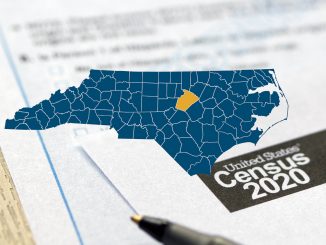
The United States had 3.5 million residents who identify as Middle Eastern or North African, Venezuelans were the fastest-growing Hispanic group last decade and Chinese and Asian Indians were the two largest Asian groups, according to the U.S. Census Bureau.
The most detailed race and ethnicity data to date from the 2020 census was released Thursday more than three years after the once-a-decade head count, which determines political power, the distribution of $2.8 trillion in annual federal funding and holds up a mirror to how the U.S. has changed in a decade. The delay was caused by the COVID-19 pandemic and the implementation of a new method to protect the confidentiality of participants.
The Census Bureau says the 2020 census provided more details on the nation’s racial and ethnic groups than ever before, offering counts for about 1,550 racial, ethnic and tribal groups, although some tables aren’t available at smaller geographies for some groups because of the new confidentiality methods.
The 2020 census was the first to allow respondents to identify themselves as coming from a Middle Eastern or North African country, otherwise known as MENA. While there was no separate MENA category in the 2020 census, respondents were encouraged to write-in their backgrounds, and if they wrote Jordanian or Moroccan, for instance, they could be classified as MENA. The data showed that more than 3.5 million people did so or in combination with another group.
The results come as the Biden administration contemplates updating the nation’s racial and ethnic categories for the first time since 1997. Right now, MENA residents are classified as white, but they would have their own category under the proposed changes. The process also would combine the race and ethnic origin questions into a single query, because some advocates say the current method of asking about race and separately about ethnic origin often confuses Hispanic respondents.
According to the 2020 census, the two largest groups of people who identified as MENA, either alone or in combination with another group, were Lebanese, with more than 685,000 people, and Iranian with more than 568,000 people. The states with the largest MENA populations were California, Michigan and New York.
Venezuelans were the fastest-growing Hispanic group. They nearly tripled their numbers, from more than 215,000 people to more than 605,000 people from 2010 to 2020, as they fled a political, economic and humanitarian crisis that has lasted the entirety of President Nicolás Maduro’s government.
Mexicans were, far and away, the largest Hispanic group in the U.S. with a population of 35.9 million people, followed by Puerto Ricans with 5.6 million people and Salvadorans at 2.3 million people.
Among the census respondents who identified as white, English was the most common detailed group written down on the form where people were asked to elaborate on their backgrounds, with 46.6 million people saying they were English alone or in any combination. They were followed by those identifying as German, with 45 million people, and Irish, with 38.6 million people.
Among the 46.9 million Black respondents, African American was the most common answer, either alone or combined with another group, at 24.5 million people, when asked about their backgrounds. That answer was followed in more or less a tie between Jamaican and Haitian at more than 1 million people each. Nigerians had the next highest responses, with more than 604,000 people, followed by Ethiopians at more than 325,000 people.
More than 5.2 million people identified as Chinese, the largest group among respondents who were Asian alone or in combination with another group. They were followed by Asian Indians with 4.7 million people, Filipinos with 4.4 million people and the Vietnamese population at 2.2 million people. The Nepalese population was the fastest growing Asian group, growing from almost 52,000 people in 2010 to almost 206,000 people in 2020. California was home to the largest share of the six most common Asian groups in the U.S. New York had the second-largest share of Chinese residents, while Texas had the second-largest share of Asian Indian residents.
For the American Indian and Alaska Native population in the U.S., Cherokee was the largest group alone or in combination with another group, with 1.5 million people. The next highest was Aztec with almost 584,000 respondents and Navajo Nation with more than 423,000. Tlingit was the largest Alaska Native alone or in any combination group, with more than 22,600 people.



